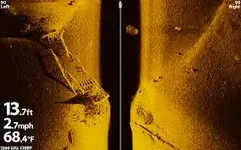docweiser
Full Member
Around October - November time line I will be seriously looking at several BRAND NEW designs for a new detector that I will design and bring to market. I am looking for any input as to requirements, a wish list. Please only reasonable requests / ideas if you don't mind. I am doing this for YOU as my prospecting parameters are already met bar a few bells and whistles in the new designs. There will be at least 2 -3 designs based on similar technology but I want to make the main design with YOUR input in mind.
You can see my post about patent concerns here http://www.treasurenet.com/forums/tech-talk/533504-enough-single-frequency-vlf-machines.html although this is just a reply to another member and does not go into great detail concerning my understanding of patents and the ability to work around same.
As long as your wish is reasonable then no request will be considered stupid. All requests will be documented and considered.
Fire at will.....
You can see my post about patent concerns here http://www.treasurenet.com/forums/tech-talk/533504-enough-single-frequency-vlf-machines.html although this is just a reply to another member and does not go into great detail concerning my understanding of patents and the ability to work around same.
As long as your wish is reasonable then no request will be considered stupid. All requests will be documented and considered.
Fire at will.....
Upvote
0










